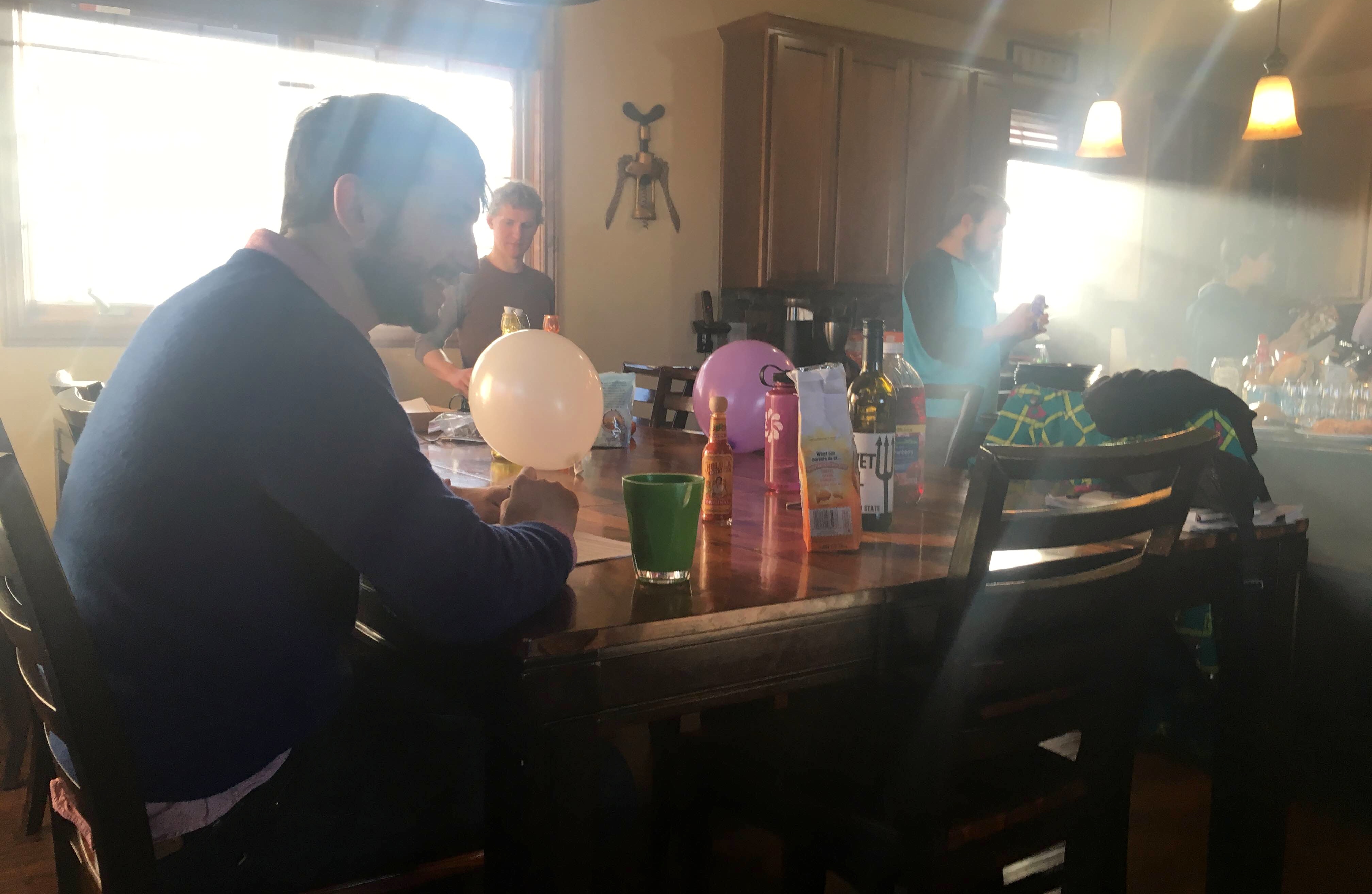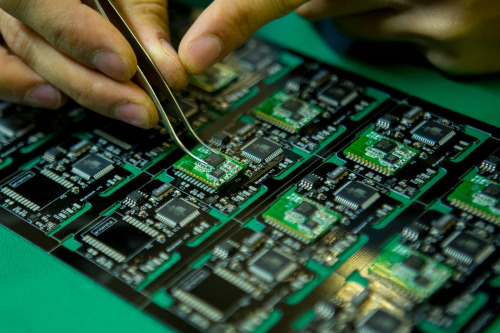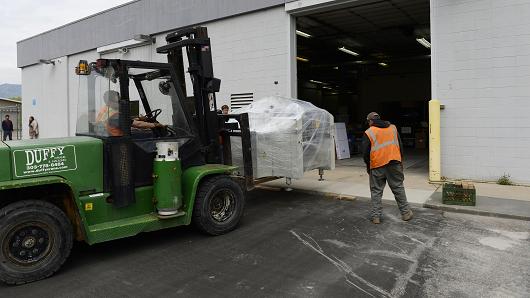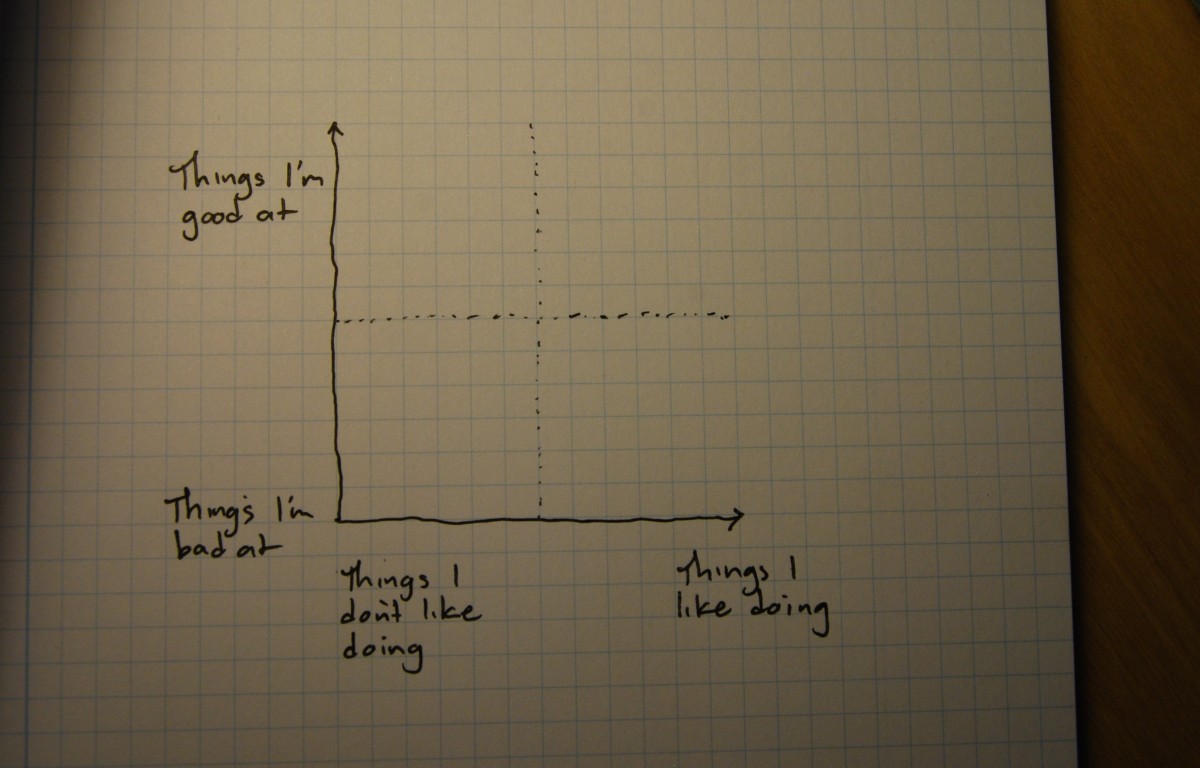All posts by Eric Schweikardt
We just had a two-day Modular Robotics retreat in the mountains. We skied on Wednesday at Winter Park, stayed in a big house in Fraser, cooked together, and spent Thursday working on strategy and planning.

This year was different from last year; we brought all of the carpet people (carpet people are all non-elves) at modbot instead of a carpet subset. It was great: every time we take a day away we seem to make amazing progress. I started off Thursday with a little story about why I Modular Robotics and what gets me up in the morning and I thought I’d share it here too:
I’ve spent some time recently with my friends’ kid who is three years old. Her incessant “why” questions can often prove thought provoking. No matter how deep she digs, you can never tell a kid that something is just because it is. Although questions of fate and trajectory are interesting for adults to discuss, telling a kid that something happened because “it was meant to be” is just a cop out. Her lines of questioning got me thinking deeply about why Modular Robotics?
Of course, that question has many answers. Because of luck, coincidence, being in a certain place at the right time, and because of a million books read, chance encounters, and free associations. But why am I doing Modular Robotics? is easier to answer.
I started and am running Modular Robotics because I want to give people tools that will help them think better about complex systems, emergence, and the ways in which the world really works. Why? Because better thinking about complexity will help us solve the world’s big problems.
I get frustrated sometimes not just by big problems in the world, but in our reaction to them. It feels to me like most of the time, our reaction (and probably, the way that we think) is often gross oversimplification. It’s an election year, for example, and if we think hard, we know that platforms and governance comprise an extremely nuanced and complex system, with thousands of interacting parts and conflicting aims. A glance at the news, however, paints issues in terms of black and white, red and blue, praise or outrage. Things are more complicated than that, and a failure or refusal to dig a little deeper and try to understand things a little better leaves us making bad decisions.
Consider social problems, mass shootings for example. It’s universally recognized that we should all work together to reduce this sort of thing, but it’s hard to find a smart conversation about it and not a thousand shouting matches that sound like “I love guns” versus “I hate guns”. The world is not that simple, and I think we can learn to think more deeply about problems in the world and make forward progress as a species.
To really understand complex systems, patterns, and emergent behavior, we could all study complexity theory, cellular automata, and chaos, but those are abstract, rarefied fields accessible usually only to academics. I think we’ll have better results getting kids to think differently about complexity, because their minds aren’t already made up and set in their ways.
Complexity science is all about taking things apart: looking at real world systems and distilling them down into theory. But kids, and adults, often learn best by building things. When we build things, or design things, we can see many different combinations of simple pieces we understand.
People have been trying to give kids little models of complex systems for a while, but most of those have been apps (the Sims, even) or other systems that encourage you to select some pixels and watch scenarios play out on a display. I think that sometimes pixels on a screen aren’t the best models for real-world systems, but that sometimes, robot blocks might be.
I’m not saying that playing with Cubelets teaches kids complexity science. But it helps them develop intuitions about complexity, emergence, patterns, networks, computation, and lots of STEM subjects, so that when they encounter those things later, they make sense. Playing with LEGO as a kid, by way of analogy, didn’t teach me the physics of friction, balance, shape, mass, and force, but when I got to Physics in twelfth grade, the laws made sense, and the equations were just another way to describe phenomena that I was already familiar with. Some people, who hadn’t gained these intuitions through experience, were lost in a sea of Greek letters.
I think that sets of robot blocks, designed, distributed, and well supported, can help make our kids smarter about the world than we are. I want to have a really broad impact with Cubelets and change as many kids’ minds as we can. That’s what gets me up in the morning.
 Modular Robotics is in full North Pole mode, building as many Cubelets as we possibly can. Demand for the new Cubelets TWELVE kit is off the chart, so we’re working extra shifts and late into the night six days a week to make as many as possible. In other words, the factory is crazy. It occurred to me that unless you’ve been by, the last photos of the factory that you may have seen were from April when we moved into our new, then empty, space. The architects who helped us with the remodel came by the other day and put up some beautiful pictures of our factory in a blog post. Take a look here!
Modular Robotics is in full North Pole mode, building as many Cubelets as we possibly can. Demand for the new Cubelets TWELVE kit is off the chart, so we’re working extra shifts and late into the night six days a week to make as many as possible. In other words, the factory is crazy. It occurred to me that unless you’ve been by, the last photos of the factory that you may have seen were from April when we moved into our new, then empty, space. The architects who helped us with the remodel came by the other day and put up some beautiful pictures of our factory in a blog post. Take a look here!

 “Leading indicators jump past expectations in June”, CNBC, Thursday, 23 Jul 2015
“Leading indicators jump past expectations in June”, CNBC, Thursday, 23 Jul 2015 



The COO is responsible for managing day-to-day operations according to annual and quarterly projections. While the CEO sets the overall strategy, the COO carries it out and leads the directors of the Sales, Production, IT, Facilities, and Shipping teams to formulate their plans and execute on them. The COO is responsible for many metrics including margin, efficiency, production volume, and sales results across direct, reseller, and education channels.This is a completely new position – we’re not replacing anyone, we’re creating the position from scratch. I’d like to tell you why. Almost every week for the last six or eight years, I’ve been drawing this little chart in my notebook.
 It’s a quadrant chart. I draw it and then work through what I did in the prior week putting little labeled dots into the quadrants. There, I spilled the beans. That little quadrant chart is my secret to productivity and happiness. No, really! As modbot has grown from 2 to 100 people, my job has changed a lot. When we were first getting started, I noticed I kept putting Accounting and Supply Chain tasks into the lower-left quadrant, so those positions were our first two hires and my chart changed dramatically the next week.
These days, the things that fall into my lower left quadrant all have to do with day-to-day management. I’m not very good at it, apparently (we still can’t make nearly enough tiny robots to satisfy demand) and I don’t particularly enjoy it. The worst part is that lately, I’ve spent all of my time working on operational matters because I suck at it and we’re not meeting our day-to-day, month-to-month production volume goals. Since I’ve been spending so much time working on the machine that is modbot, I haven’t focused much on where the machine is going: strategy, communication, financing, R&D, our tiny robot roadmap, and all of the other things that inhabit my upper-right quadrant. So: compounding negative returns = time for a change.
The notion that maybe I should find someone else to be modbot’s CEO has occurred to me. Maybe I was OK at the job for the first few years but modbot needs somebody different for the next few? My friend Nathan is doing this right now, and seeing him so excited to return to designing stuff, instead of managing stuff, induces a twinge of envy. I even brought it up with our Board of Directors, who counseled that I was probably the best person to lead the company, but that I might consider a strategic hire to take on some serious responsibility so that I can spend some more time in my upper right quadrant.
Many companies don’t have COOs. But Modular Robotics is an operationally intensive business. The processes and systems involved in making thousands and thousands of tiny robots are complex, serious, and demand focus and experience. So we’re looking for someone amazing. Somebody who has led a hardware company from millions per year to tens of millions. Somebody who I can completely trust to manage toward metrics and grow our operations while I focus on the other half. Wait, which other half?
Can we look at charts for a minute? Thanks. I really love charts. Here’s the first version of our org chart that I made with a COO added into the mix.
It’s a quadrant chart. I draw it and then work through what I did in the prior week putting little labeled dots into the quadrants. There, I spilled the beans. That little quadrant chart is my secret to productivity and happiness. No, really! As modbot has grown from 2 to 100 people, my job has changed a lot. When we were first getting started, I noticed I kept putting Accounting and Supply Chain tasks into the lower-left quadrant, so those positions were our first two hires and my chart changed dramatically the next week.
These days, the things that fall into my lower left quadrant all have to do with day-to-day management. I’m not very good at it, apparently (we still can’t make nearly enough tiny robots to satisfy demand) and I don’t particularly enjoy it. The worst part is that lately, I’ve spent all of my time working on operational matters because I suck at it and we’re not meeting our day-to-day, month-to-month production volume goals. Since I’ve been spending so much time working on the machine that is modbot, I haven’t focused much on where the machine is going: strategy, communication, financing, R&D, our tiny robot roadmap, and all of the other things that inhabit my upper-right quadrant. So: compounding negative returns = time for a change.
The notion that maybe I should find someone else to be modbot’s CEO has occurred to me. Maybe I was OK at the job for the first few years but modbot needs somebody different for the next few? My friend Nathan is doing this right now, and seeing him so excited to return to designing stuff, instead of managing stuff, induces a twinge of envy. I even brought it up with our Board of Directors, who counseled that I was probably the best person to lead the company, but that I might consider a strategic hire to take on some serious responsibility so that I can spend some more time in my upper right quadrant.
Many companies don’t have COOs. But Modular Robotics is an operationally intensive business. The processes and systems involved in making thousands and thousands of tiny robots are complex, serious, and demand focus and experience. So we’re looking for someone amazing. Somebody who has led a hardware company from millions per year to tens of millions. Somebody who I can completely trust to manage toward metrics and grow our operations while I focus on the other half. Wait, which other half?
Can we look at charts for a minute? Thanks. I really love charts. Here’s the first version of our org chart that I made with a COO added into the mix.
 That org chart isn’t totally satisfying. It puts a COO in charge of Manufacturing, Sales, Finance, and Tech Ops, and puts me in charge of the rest: Engineering and Marketing. But it strikes me that the distinction between the two halves is not arbitrary, that it’s meaningful. The Operations half is running the machine, the other half, which figures out where the machine is going, is the Design half. Engineering designs products, Marketing designs media and materials, and our Product teams design experiences and educational activities. I like to consider these as tags, not as categories, because complex systems like Modular Robotics don’t map very well to getting put in little boxes, but here’s a second stab at our org chart where Design is green and Ops is blue.
That org chart isn’t totally satisfying. It puts a COO in charge of Manufacturing, Sales, Finance, and Tech Ops, and puts me in charge of the rest: Engineering and Marketing. But it strikes me that the distinction between the two halves is not arbitrary, that it’s meaningful. The Operations half is running the machine, the other half, which figures out where the machine is going, is the Design half. Engineering designs products, Marketing designs media and materials, and our Product teams design experiences and educational activities. I like to consider these as tags, not as categories, because complex systems like Modular Robotics don’t map very well to getting put in little boxes, but here’s a second stab at our org chart where Design is green and Ops is blue.
 I like this view. It’s a more helpful framework for me to think about the complex system that is modbot than a traditional business hierarchy (probably because I’m a designer, not a MBA). But it implies something inaccurate, which is that the heirarchy effectively isolates different tree branches. Sales goes up through COO but Marketing goes up through CEO. Sales and Marketing, in reality, work extremely closely together, but the chart makes it look otherwise. So I made one more attempt.
I like this view. It’s a more helpful framework for me to think about the complex system that is modbot than a traditional business hierarchy (probably because I’m a designer, not a MBA). But it implies something inaccurate, which is that the heirarchy effectively isolates different tree branches. Sales goes up through COO but Marketing goes up through CEO. Sales and Marketing, in reality, work extremely closely together, but the chart makes it look otherwise. So I made one more attempt.
 Perfect, right? OK, maybe the previous one is easier to understand. Where were we? Right, the COO position. It’s taken me a while to figure this out. I’ve read, I’ve journaled, and I’ve talked with a bunch of other CEOs, our investors, and my mentors. I particularly liked this article that identified four major failure patterns in the COO role. We’ve got the right reason, the right time, now we need to find the right person and make sure we have the right support structures in place. This isn’t a role that we’ll post an ad on craigslist for, in fact, I’m not even going to put up a normal job posting for it. Are you the right person? Do you know the right person? Drop me a note!
Perfect, right? OK, maybe the previous one is easier to understand. Where were we? Right, the COO position. It’s taken me a while to figure this out. I’ve read, I’ve journaled, and I’ve talked with a bunch of other CEOs, our investors, and my mentors. I particularly liked this article that identified four major failure patterns in the COO role. We’ve got the right reason, the right time, now we need to find the right person and make sure we have the right support structures in place. This isn’t a role that we’ll post an ad on craigslist for, in fact, I’m not even going to put up a normal job posting for it. Are you the right person? Do you know the right person? Drop me a note! 
